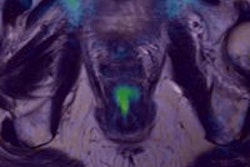Using 3-tesla diffusion-weighted MRI (DWI), Swiss researchers found that apparent diffusion coefficient (ADC) values of malignant liver lesions successfully treated by radiofrequency (RF) ablation may help radiologists monitor tumor response within six months of therapy, according to a study published online on 18 July in the European Journal of Radiology.
Ablation zones of treated metastases "have a clear and predictable pattern of ADC behavior before and after treatment," the researchers from the University of Lausanne concluded. The findings, they believe, may serve as the foundation for future studies investigating focal tumor recurrence.
Lead study author is Dr. Tri-Linh Lu from the department of diagnostic and interventional radiology at the Centre Hospitalier Universitaire Vaudois.
Assessing response
MRI has traditionally been used to evaluate treatment response in malignant liver lesions. However, as the researchers noted, the assessment of tumor response after certain treatments, such as RF ablation, can be difficult.
As previous studies have shown, liver lesions treated by RF ablation often contain a hypersignal on T1-weighted MRI sequences, which makes residual tumor contrast enhancement difficult to differentiate.
From April 2008 to February 2011, researchers evaluated 32 consecutive patients (26 men and six women), ranging in age from 24 to 76 years (median age of 60 years) who were being evaluated with MRI for liver malignancy prior to their treatment. The subjects also included patients who were treated with RF ablation within one month of their initial MRI exam and had undergone three MRI evaluations one, three, and six months after RF ablation.
The study excluded patients who had focal tumor recurrence, lesions that could not be properly identified to artifacts, lesion smaller than 1 cm in diameter that could not be correctly characterized, or patients who had missed a post-treatment assessment.
The final study sample of 31 patients included 43 malignant liver lesions, 20 of which were hepatocellular carcinomas and 22 of which were liver metastases. Six patients had two lesions, one individual had three lesions, and one person had four lesions.
Patients were imaged using T2-, gadolinium-enhanced T1-, and DWI-weighted MR sequences on a 3-tesla MRI system (Magentom Trio, Siemens Healthcare). Radiofrequency ablation was conducted either through ultrasound guidance or under combined ultrasound and CT guidance by two interventional radiologists.
Two radiologists prospectively measured ADC values for each lesion by two different regions of interest. The first region of interest included the whole lesion, while the second included the most visibly restricted diffusion area on the ADC map.
ADC values
In their analysis, the researchers found that patients' ADC scores showed what they described as a "clear up-and-down evolution" before RF ablation treatment and at the one-, three-, and six-month MRI follow-up exams.
The ADC value prior to treatment was 1.19 ± 0.30 and increased to 1.49 ± 0.25 after one month of treatment. At the three-month mark, the ADC value was 1.61 ± 0.30 and 1.38 ± 0.21 at six months.
The change in the size of lesions also showed the same significant up-and-down pattern. The area ADC score was 2.90 ± 3.06 cm² prior to treatment and increased to 7.05 ± 4.40 cm² at one month. At three months, the ADC was 5.96 ± 3.3 cm² and 4.60 ± 3.04 cm² at the six-month mark.
Lu and colleagues speculated that the decrease in ADC value at the six-month MRI exams may have been due to fibrosis following tumor necrosis.
The researchers also noticed a more complex pattern of ADC activity in the group of patients with hepatocellular carcinomas compared with the group with liver metastases. The pretreatment ADC value for patients with hepatocellular carcinomas was 1.20 ± 0.26. The ADC value increased to 1.46 ± 0.33 in one month, but then declined to 1.37 ± 0.33 at three months and increased again to 1.52 ± 0.33 at six months.
The similarity between pretreatment and three-month ADC scores and the decrease between one-month and six-month follow-up left researchers to speculate as to the reason.
"This phenomenon is difficult to explain," Lu and colleagues wrote. "One might hypothesize some kind of restrictive effect due to cellular swelling specific to [hepatocellular carcinomas]. However, it should rather be seen in the acute stage after treatment, if one extrapolates on the basis of cerebral ischemia."
While there was no "clear-cut" pattern for the hepatocellular carcinomas, there is still a "clear and predictable pattern of ADC behavior before and after treatment" for the ablation zones of treated metastases, Lu and colleagues concluded. The results also may serve as the foundation for future research into focal tumor recurrence.



















